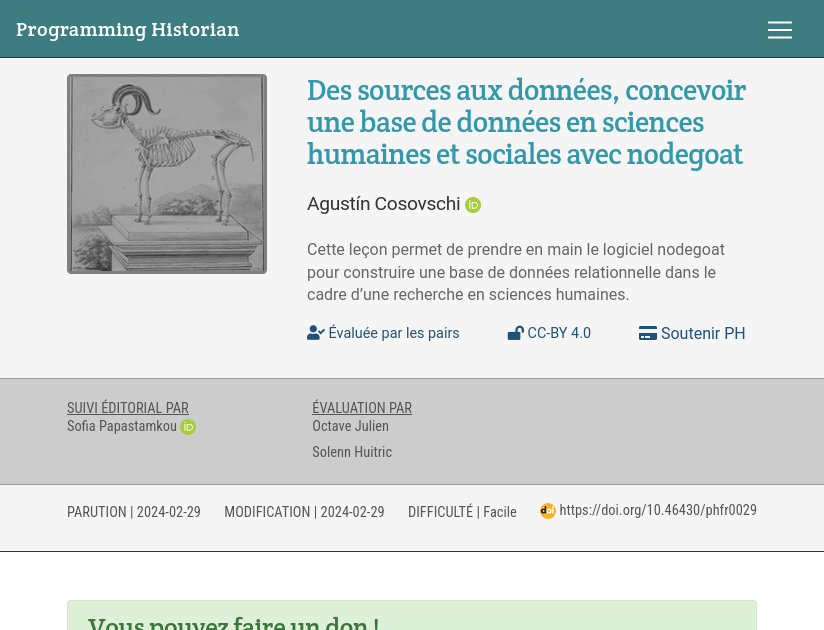Nouvelle leçon sur nodegoat publiée par The Programming Historian en français
CORE Admin
Nous sommes ravis d'annoncer que la ressource en ligne "The Programming Historian en français" a publié une leçon sur la conceptualisation d'une base de données à l'aide de nodegoat : Des sources aux données, concevoir une base de données en sciences humaines et sociales avec nodegoat.
La leçon a été rédigée par Agustín Cosovschi, édité par Sofia Papastamkou et évalué par Octave Julien et Solenn Huitric.[....]





